If you're on the "no" end of the spectrum, I'm going explain everything you need to know to get started with Enhanced Campaigns, and how to actually create your own mobile ad campaigns. And if you want even more about how to make paid search work for you -- or you're interested in understanding more of the changes Google has planned -- register for our free webinar with HubSpot on June 6th.
Understanding User Context
First, I need to explain an important mobile search concept known as user context. If you do PPC or SEO, then you already know that search marketing is so powerful because it lets you connect with people who are searching for the keywords that are relevant to your business.What you might not know is that, depending on the time, location and device a keyword search was executed, two users might be looking for completely different things even though they’re searching using the exact same keyword.
As an example, consider User A in the figure below. He’s at home, on his laptop, at lunchtime. So when he searches for “pizza,” he’s really looking for lunch specials from pizza places with delivery options.
Contrast that with User B, who is on her phone, downtown, in the evening. She’s probably looking for directions to a nearby pizza restaurant that sells pizza by the slice.
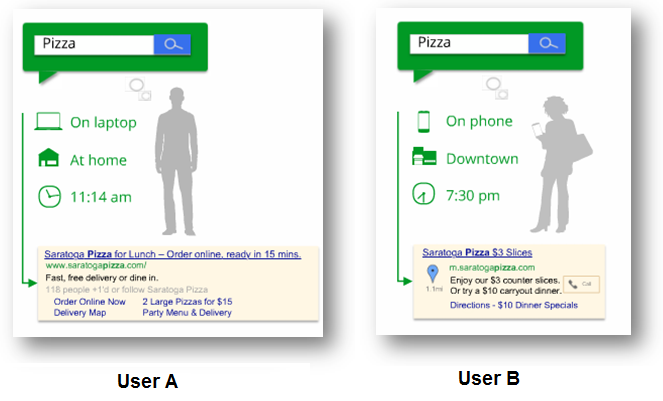
User context is defined as the time, location and device a search originates from. It matters because understanding user context will help you run more profitable AdWords campaigns. Here’s how:
- You Can Create Better Ads: By understanding a user’s context, you can better understand a searcher’s needs and then make your ad copy reflect that. Notice how the ad for User B features a click-to-call button and directions to the store since she’s on a mobile phone, whereas the ad for User A calls out lunch specials and delivery options since he’s at home at lunch time.
- You Can Bid Smarter for Clicks: User context can determine if a searcher is likely to be a good customer or not. For example, if you’re a restaurant, then you’re more likely to value mobile traffic on nights and weekends nearby your location. Whereas a B2B software company might instead value desktop search traffic originating from countries where they do business, during business hours, on weekdays. By being able to segment clicks by user context, you can be pickier and only pay for clicks that are more likely to convert into customers.
Bidding Options in Enhanced Campaigns
Using AdWords Enhanced Campaigns, you can adjust your bids based on the time, location, and device a search originated from.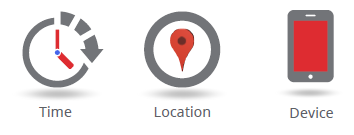
Here’s what that looks like in AdWords. Just go to your campaign Settings tab and look for the Locations, Schedule, and Devices tabs:

Location-Based Bidding Options
Say your business is based in the U.S., but you sell to both Canada and the U.S. But for whatever reason, suppose that clicks from Canada convert at a lower rate compared to clicks from the U.S. To optimize your bids, you could just apply location-based bidding as shown below, in which I’ve bid less on clicks from Canada by 30%!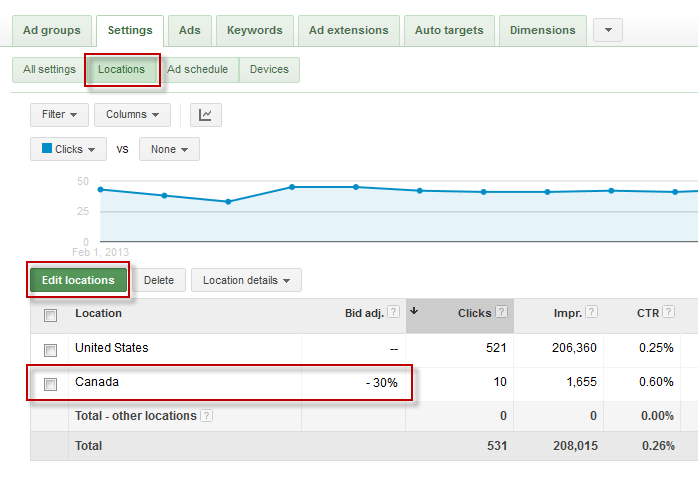
Using geographic bid manipulation vectors, you can bid more or less on clicks from any location by whatever you want, within a range of +300% to -100%.
Or, suppose your restaurant does great with searches executed within a one-mile radius of your restaurant, does okay with clicks within a two-mile radius of the restaurant, and does not-so-great for clicks within a five-mile radius. In this case, you could bid more aggressively for the closer searches (which are more valuable to your business) and less for the clicks from farther away (which are less valuable).
Time-Based Bidding Options
With enhanced campaigns, it’s super easy to bid more or less based on time of day and day of the week. In the following illustration, look how I’ve bid more on weekday traffic during business hours by 30%, and bid less on weekend traffic by 50% (for example, if the office is closed).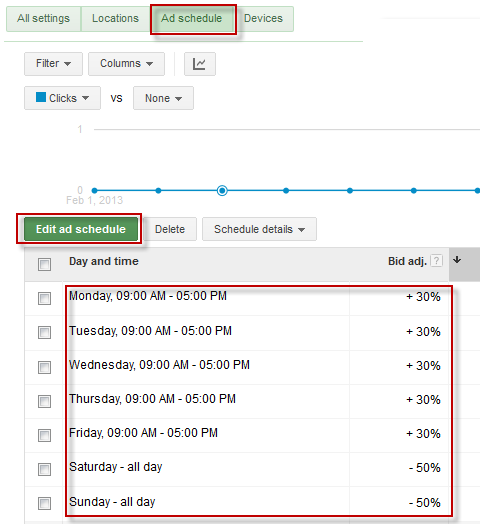
Again, you have complete flexibility to choose whatever time bid adjustment factors that makes the most sense for your business.
Mobile Device-Based Bidding Options
Enhanced campaigns make it easy to bid more or less for traffic originating from mobile devices. For example, if your business is one that takes orders over the phone, chances are that mobile searches are worth way more for your business. In the illustration below, you can see how I’ve adjusted mobile bids down by 10%.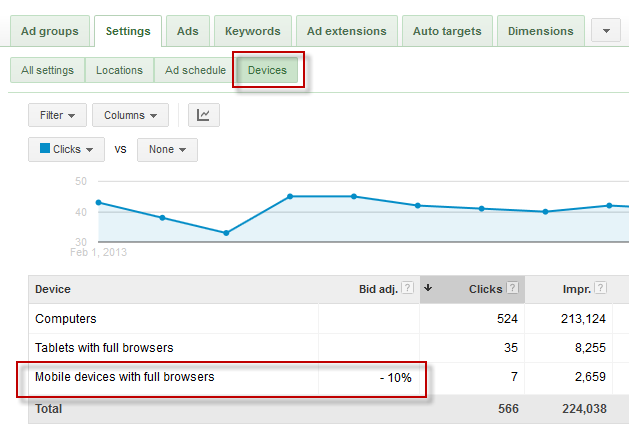
Smarter, User Context-Aware Ads
Enhanced Campaigns offers smarter, user-context aware ads so you can display different ads depending on the context of where the search originated. For example, if you’d like to display a different ad for searches originating from mobile devices, just check the box that reads “Mobile Preferred Ad,” as illustrated here: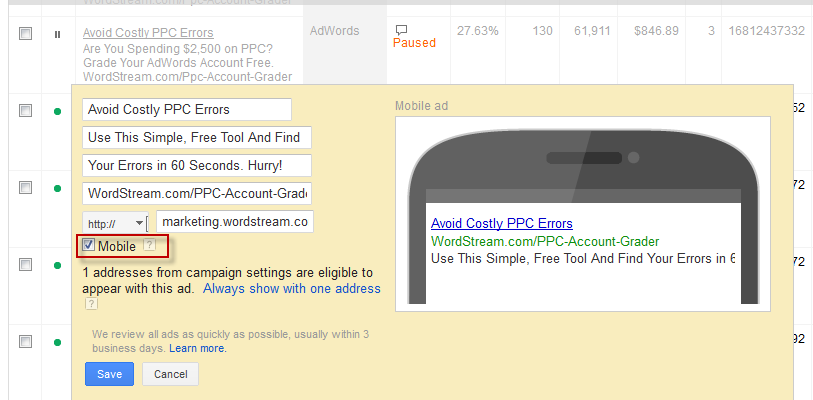
At this point, it’s worth pointing out that although many of these advertising features were previously available, they were rarely used because they were too hard to implement -- you had to create a separate ad campaign for every possible combination of time, location, and device. Also, note that in Enhanced Campaigns, tablet traffic is considered to be desktop traffic, since most tablet searches are replacements for searches that would have otherwise originated from a computer at home.
With Enhanced Campaigns, you can be very precise with your ads and bids all within a single ad campaign. The new organization makes a lot of sense for most advertisers and is a much more scalable way to build and manage your PPC campaigns.
No comments:
Post a Comment